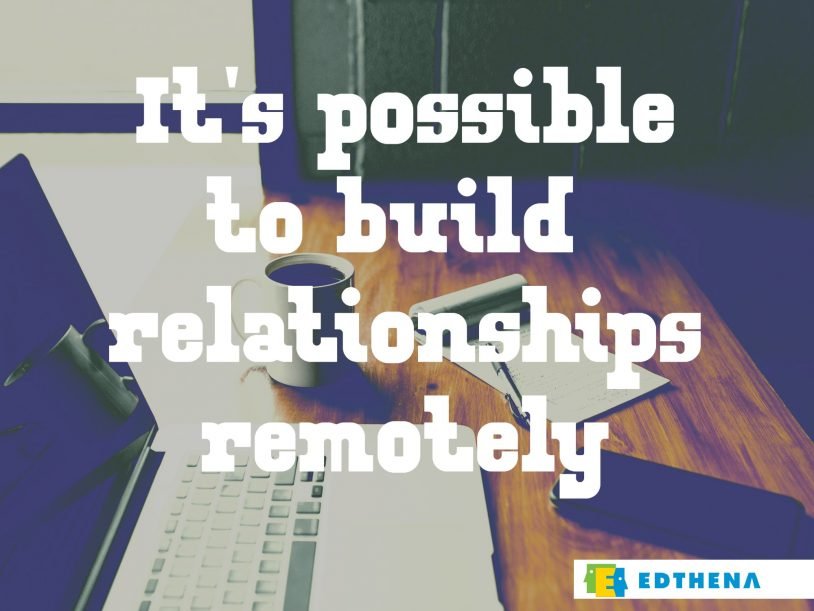Strong Instructional Coaching Relationships are Achievable Across Distance, According to Jim Knight [VIDEO]
-
Providing guidance and tools to help teachers reach their own professional goals can help develop effective instructional coaching relationships by improving engagement and dedication to teacher learning.
-
Transitioning from a coaching role to a thought partner role allows coaches to work alongside teachers to support them through learning.
-
Coaches’ flexibility in their roles can help support teachers through distance teaching.
Jim Knight, the author of multiple professional development books, including Instructional Coaching, is an expert in implementing video as a critical tool in the coaching process. After reflecting on instructional coaching relationships with teachers in both face-to-face classrooms and virtual learning, Jim can visualize the shift that is needed for coaches to foster new relationships with teachers that are effective in distance teaching.
“See [coaches] as providing a service to teachers,” Jim said in his interview for the professional development blog PLTogether.
Through a recent conversation with Adam Gellar, CEO of Edthena, Jim discussed the importance of incorporating teacher-driven goals as a key focus for instructional coaches to support teachers in a virtual environment.
You can watch part 4 of the 4-part interview segment above, and we have shared some of the key highlights below.
The power of teacher-driven goals
Previously, instructional coaching relationships with teachers were cultivated around face-to-face support regarding best practices while offering tools and feedback to guide teacher learning in a traditional classroom. Through their interactions, coaches were able to support teachers to drive instruction.
As coaches shift their focus on teachers and their instruction in the classroom to a teacher’s virtual learning environment, how can coaches ensure they are creating new relationships in a way that is supporting teachers through distance teaching?
“Start with defining what your job is,” Jim said.
To foster coach-teacher relationships around distance teaching, Jim believes that coaches should adopt the mindset that they provide a service to teachers. In doing so, coaches should help teachers identify their learning goals and provide them with the power tools they need to succeed.
“Everything [coaches] do is driven by what the teacher identifies as their most pressing needs and things they want to work on,” Jim stated.
Building relationships with teachers in a virtual environment

Implementing a teacher-driven goal into coaching allows the coach to act as a “thought partner” in the relationship. Ultimately, as a thought partner, coaches are able to support teachers while working alongside them to help them think through problems and strategies to help teachers reach their own goals.
“Once you’re working on something that really matters to the teacher, the thing they think about when they drive home at night, and when they wake up in the middle of the night the thing that’s on their mind, once you’re working on that, there’s no resistance, because we’re just two professionals trying to figure out how to do this thing that you want to do,” Jim said.
Jim believes if coaches engage with teachers to support their needs in a virtual environment, teachers will become more committed to reaching their goals.
“You’re not there to tell [teachers] what they did right and what they did wrong. That doesn’t work very well. You’re there to help them identify a really powerful goal they want to hit, and then provide really awesome support so they can hit the goal,” said Jim.
The changing roles for instructional coaching relationships during distance learning
As coaches and teachers navigate through virtual teaching relationships learning new techniques and instructional tools, Jim stressed the importance of coaches being flexible in their role to support teachers.
“There will be times when you’re a mentor, where you’re an expert sharing stuff. There’ll be times when you’re a trainer, and there’ll be other times when you’re a coach. And when you’re a coach, it’s driven by the goal.” Jim said.
Regardless of what coaches are working on with teachers, Jim believes it is essential to be doing it because the teacher wants the coach to help guide their learning.
“The lines between being a mentor, a trainer, technical support, [or] a coach, are going to be blurry. But you just want to make sure that what you’re doing is happening because it’s what the teacher wants, not because it feels good to you,” said Jim.
Jim’s approach to creating effective relationships with teachers in a virtual environment keeps the teacher as the main focus. What are their needs? Where do they need support? What is their goal? Although coaches’ roles may change throughout distance learning, their mission to support teachers through their instruction remains the same.
Like what your reading? Read our related Lounge Talk interview with Deborah Ball about what hooks students into Math Instruction during Covid-19.
Also – check out this related article with Jim Knight about instructional coaching relationships and how video observation pains a clear picture of an educator’s current reality!
